7 start with S start with S

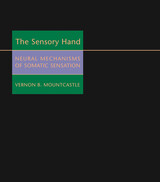
The hand is an organ of considerable capability. With it we feel, point, and reach, we determine the texture and shape of objects we palpate, we emit and receive signs of approval, compassion, condolence, and encouragement, and, on a different register, rejection, threat, dislike, antagonism, and attack.
Vernon Mountcastle has devoted his career to studying the neurophysiology of sensation--the extended sensory surface, consisting of skin and subcutaneous tissue--in the hand. In The Sensory Hand Mountcastle provides an astonishingly comprehensive account of the neural underpinnings of the rich and complex tactile experiences evoked by stimulation of the hand. Mountcastle focuses attention on the nerve pathways linking the hand to central neural structures, structures that play a role in several other aspects of somatic sensation. His new book thus becomes a sequel to his earlier volume, Perceptual Neuroscience, in which he offered a detailed analysis of the role of the distributed systems of the neocortex in perception generally.
Written by one of the giants of modern neuroscience and the first single-authored book-length treatment of the subject, The Sensory Hand is a major work of scholarship that will be essential reading for anyone interested in how the brain registers sensation and perception.
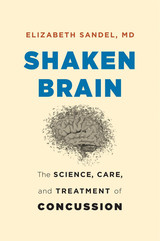
A physician with thirty-five years of experience treating people with brain injuries shares the latest research on concussions and best practices for care.
The explosion of attention to sports concussions has many of us thinking about the addled brains of our football and hockey heroes. But concussions happen to everyone, not just elite athletes. Children fall from high chairs, drivers and cyclists get into accidents, and workers encounter unexpected obstacles on the job. Concussions are prevalent, occurring even during everyday activities. In fact, in less time than it takes to read this sentence, three Americans will experience a concussion. The global statistics are no less staggering.
Shaken Brain offers expert advice and urgently needed answers. Elizabeth Sandel, MD, is a board-certified physician who has spent more than three decades treating patients with traumatic brain injuries, training clinicians, and conducting research. Here she explains the scientific evidence for what happens to the brain and body after a concussion. And she shares stories from a diverse group of patients, educating readers on prevention, diagnosis, and treatment. Few people understand that what they do in the aftermath of their injury will make a dramatic difference to their future well-being; patient experiences testify to the best practices for concussion sufferers and their caregivers. Dr. Sandel also shows how to evaluate risks before participating in activities and how to use proven safety strategies to mitigate these risks.
Today concussions aren’t just injuries—they’re big news. And, like anything in the news, they’re the subject of much misinformation. Shaken Brain is the resource patients and their families, friends, and caregivers need to understand how concussions occur, what to expect from healthcare providers, and what the long-term consequences may be.
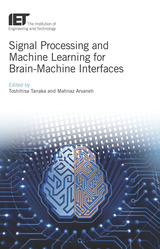

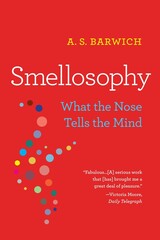
An NRC Handelsblad Book of the Year
“Offers rich discussions of olfactory perception, the conscious and subconscious impacts of smell on behavior and emotion.”
—Science
Decades of cognition research have shown that external stimuli “spark” neural patterns in particular regions of the brain. We think of the brain as a space we can map: here it responds to faces, there it perceives a sensation. But the sense of smell—only recently attracting broader attention in neuroscience—doesn’t work this way. So what does the nose tell the brain, and how does the brain understand it?
A. S. Barwich turned to experts in neuroscience, psychology, chemistry, and perfumery in an effort to understand the mechanics and meaning of odors. She discovered that scents are often fickle, and do not line up with well-defined neural regions. Upending existing theories of perception, Smellosophy offers a new model for understanding how the brain senses and processes odors.
“A beguiling analysis of olfactory experience that is fast becoming a core reference work in the field.”
—Irish Times
“Lively, authoritative…Aims to rehabilitate smell’s neglected and marginalized status.”
—Wall Street Journal
“This is a special book…It teaches readers a lot about olfaction. It teaches us even more about what philosophy can be.”
—Times Literary Supplement
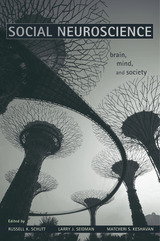
Human beings evolved in the company of others and flourish in proportion to their positive social ties. To understand the human brain, we must situate its biology in the wider context of society. To understand society, we must also consider how the brains and minds of individuals shape interactions with other human beings. Social Neuroscience offers a comprehensive new framework for studying the brain, human development, and human behavior.
In this book, leading researchers in the fields of neurobiology, psychiatry, psychology, and sociology elucidate the connections between brain biology and the brain’s functioning in the social world, providing a state-of-the-art interdisciplinary explanation of how humans think and act, as well as the ways we define and treat pathological behavior. Synthesizing the insights and perspectives of these experts, Social Neuroscience examines how neural processes make the brain sensitive to social experience, how cognition shapes social behavior, and how social networks create a range of responses among different individuals to the same environmental stimuli.
The mutually reinforcing connections between brain, mind, and society have profound implications for human health, from the emotionally damaging effects of severe social deprivation to the neurological impact of parental abuse and neighborhood violence. The authors explore these connections, with special focus on mental illnesses, including schizophrenia—a disorder characterized by marked social deficits in which a neurological basis is now well established.
READERS
Browse our collection.
PUBLISHERS
See BiblioVault's publisher services.
STUDENT SERVICES
Files for college accessibility offices.
UChicago Accessibility Resources
home | accessibility | search | about | contact us
BiblioVault ® 2001 - 2025
The University of Chicago Press









